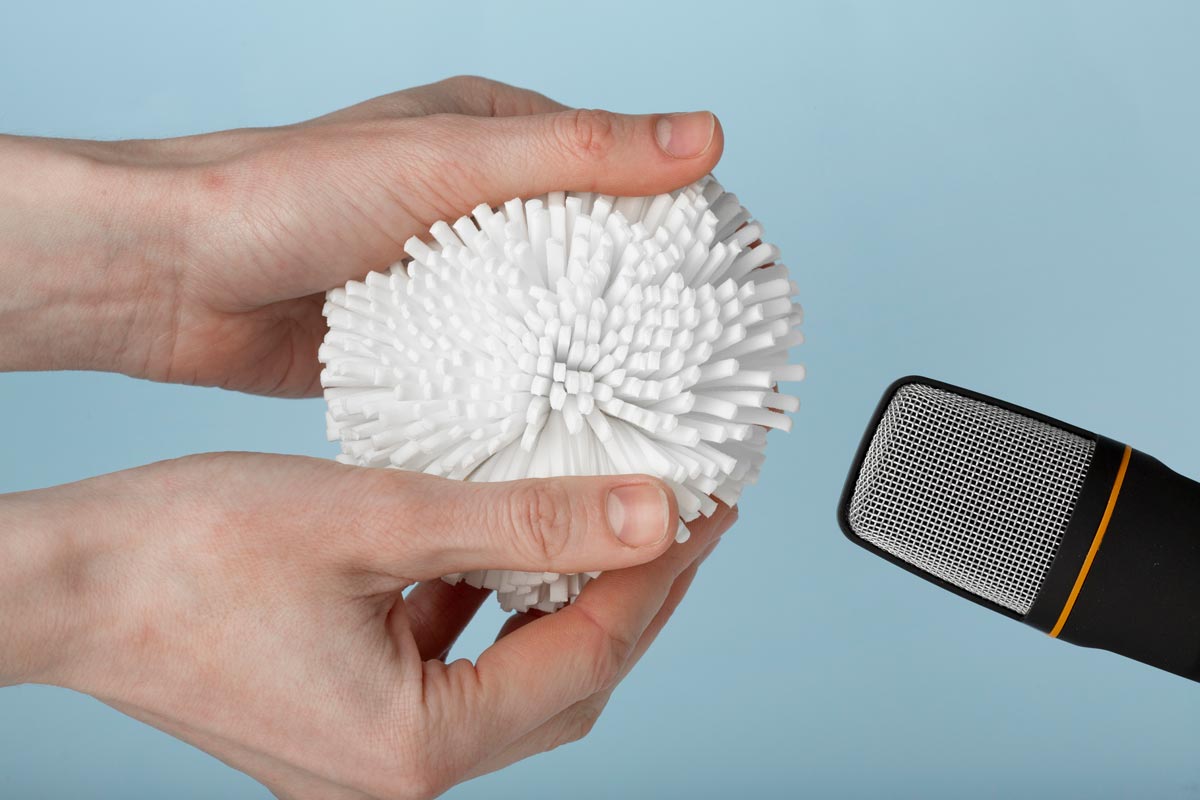If someone had told me twenty years ago that one day advertisers would be whispering into microphones, tapping fingernails on soda cans, and crinkling chip bags for marketing purposes, I probably would have laughed and said, “That sounds like late-night radio gone wrong.” Fast-forward to today, and that very thing has a name: ASMR. And it isn’t a joke—it’s one of the fastest-growing trends in how brands connect with people.
ASMR, short for autonomous sensory meridian response, is a fancy way of saying that certain sounds make people feel calm, tingly, and strangely satisfied. The internet made it famous. Millions of people log onto YouTube and TikTok not for music videos or viral dances, but to listen to someone gently brush a microphone or peel the label off a bottle of water in complete silence. It sounds odd if you haven’t experienced it, but the truth is, people can’t get enough of it.
Naturally, advertisers noticed. If viewers are happily watching 15 minutes of someone whispering into a headset, why not harness that same attention span for brands? Suddenly, commercials shifted from big bold jingles to soft whispers and soundscapes. Michelob Ultra ran a Super Bowl ad where Zoë Kravitz tapped a beer bottle and whispered like she was sharing a secret. IKEA rolled out long ASMR-style videos featuring sheets being smoothed and boxes being unpacked. Even KFC got in on the game, with a whispering Colonel Sanders describing the crunch of fried chicken.
Now, I know what you’re thinking: advertising is already weird enough. Do people really want to hear someone tapping their fingernails on a soda can instead of a catchy slogan? The answer, surprisingly, is yes. The beauty of ASMR in advertising is that it sneaks up on people. Instead of blasting an ad at full volume, it disarms the viewer with subtlety. Instead of being ignored, it piques curiosity. It doesn’t shout for attention—it whispers until people lean in.
In a world full of autoplay videos and endless scrolling, that subtlety stands out. Bright colors and bold fonts often fade into the background noise of the internet. But the sound of a soda fizzing, paper crinkling, or bacon sizzling in a pan? That cuts through. It catches attention in an unexpected way, and the human brain can’t help but respond.
There’s also the sensory connection. When someone hears a can crack open, the brain doesn’t just hear the sound—it imagines the cold sip of soda. When someone hears sheets being folded, they can almost feel the fabric. And when someone hears fried chicken crunch, well, they start wondering how long it’s been since lunch. The sound does half the marketing work on its own.
What makes ASMR so interesting is that it flips the script. For decades, advertising has relied on volume, speed, and over-the-top slogans. Now, the focus is on slowing down and zooming in on the small details. It’s not about shouting louder than the competition. It’s about being quiet enough to be noticed in a world of noise.
There’s humor in that, too. Imagine a boardroom full of executives listening intently to someone slowly tearing Velcro apart. Or a production crew carefully recording the sound of a spoon stirring soup. It may look ridiculous, but the end product works. And that’s what makes it fascinating.
From a creative perspective, ASMR opens the door to almost limitless possibilities. Restaurants can capture the crackle of a steak on the grill. Retailers can highlight the crinkle of shopping bags being opened. A hotel can feature the sound of waves crashing or sheets being tucked. Even local businesses in New Orleans could find their signature sounds—beignets frying, jazz records spinning, or the satisfying snap of a crawfish shell. Suddenly, sound becomes the star of the show.
Of course, not every brand should rush out and start whispering in ads. Like any tool, ASMR works best when it’s authentic to the product. Nobody wants to hear the ASMR version of tax preparation—though, come to think of it, the click of calculators and the shuffling of papers might actually be soothing to someone out there. The point is, ASMR should enhance the natural sensory experience of what’s being sold, not feel forced.
In the end, the rise of ASMR in advertising says a lot about how audiences have changed. People are tired of being shouted at. They crave experiences that feel personal, even intimate. They want advertising that doesn’t just sell to them but engages them in unexpected ways. ASMR delivers that by turning everyday sounds into something worth paying attention to.
It may look strange to see someone whispering over a microphone while tapping on a soda bottle, but it’s also proof that the future of branding is wide open. Sound has always been part of advertising, but now it’s stepping into the spotlight in ways nobody would have predicted a decade ago.
For those of us in the business of building brands, ASMR isn’t just a trend to watch—it’s a reminder that creativity often comes from the least expected places. Sometimes the most powerful way to connect isn’t through a bigger billboard or a louder message, but through the quiet crackle of a chip bag, the fizz of a soda, or the crunch of fried chicken.



